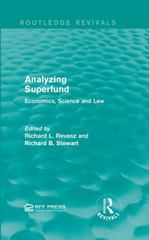Question
1. Cigarettes and chewing gums are substitutes in consumption (but are unrelated in production). Consider the situation where the cigarette tax has been increased. The
1. Cigarettes and chewing gums are substitutes in consumption (but are unrelated in production). Consider the situation where the cigarette tax has been increased. The immediate effect is that the buyer price of a cigarette rises, and the chewing gum demand increases. When these markets adjust towards a new general equilibrium, what are the changes that come next? Assume downward sloping demand and upward sloping supply for both markets.
a) The chewing gum price rises, demand for cigarettes decreases.
b) The chewing gum price rises, demand for cigarettes increases.
c) The chewing gum price falls, demand for cigarettes decreases.
d) The chewing gum price falls, demand for cigarettes increases.
2. Coffee and cake are complements in consumption (but are unrelated in production). Suppose that the coffee supply has declined because of bad weather. How would the predictions of the price and quantity in the coffee market differ between partial and general equilibrium analyses? Assume downward sloping demand and upward sloping supply for both markets.
a) General equilibrium price and quantity are lower.
b) General equilibrium price and quantity are higher.
c) General equilibrium price is higher and quantity is lower.
d) General equilibrium price is lower and quantity is higher.
3. Irrespective of the amount of apples and oranges that Bob consumes, his marginal rate of substitution of apples for oranges is 1. Also, irrespective of the amount of apples and oranges that Jane consumes, her marginal rate of substitution of apples for oranges is 2. Bob and Jane both are endowed with 10 apples and 10 oranges. Which of the following statements are true?
a) The endowment is not Pareto optimal. Bob consuming 18 apples (and Jane consuming 2 apples and 20 oranges) would make both of them better off.
b) The endowment is Pareto optimal as Bob and Jane have equal amounts of both goods.
c) The endowment is not Pareto optimal. Bob consuming 20 apples and Jane consuming 20 oranges would make both of them better off.
d) The endowment is not Pareto optimal. Bob consuming 2 apples and 20 oranges (and Jane consuming 18 apples) would make both of them better off.
4. Suppose there are 10 apples and 10 oranges in the economy. Joe is currently consuming 4 apples and Jane is consuming 6 apples. It is also known that under the current allocation, Joe's marginal utility of apples is 3, his marginal utility of oranges is 5, and that Jane's marginal utility of apples is 9. If the current allocation is efficient, then it must be that:
a) Joe is consuming 6 oranges and Jane is consuming 4 oranges.
b) Jane's marginal utility of oranges is 6 at this allocation.
c) Jane's marginal utility of oranges is 15 at this allocation.
d) None of the above.

Step by Step Solution
There are 3 Steps involved in it
Step: 1

Get Instant Access to Expert-Tailored Solutions
See step-by-step solutions with expert insights and AI powered tools for academic success
Step: 2

Step: 3

Ace Your Homework with AI
Get the answers you need in no time with our AI-driven, step-by-step assistance
Get Started


